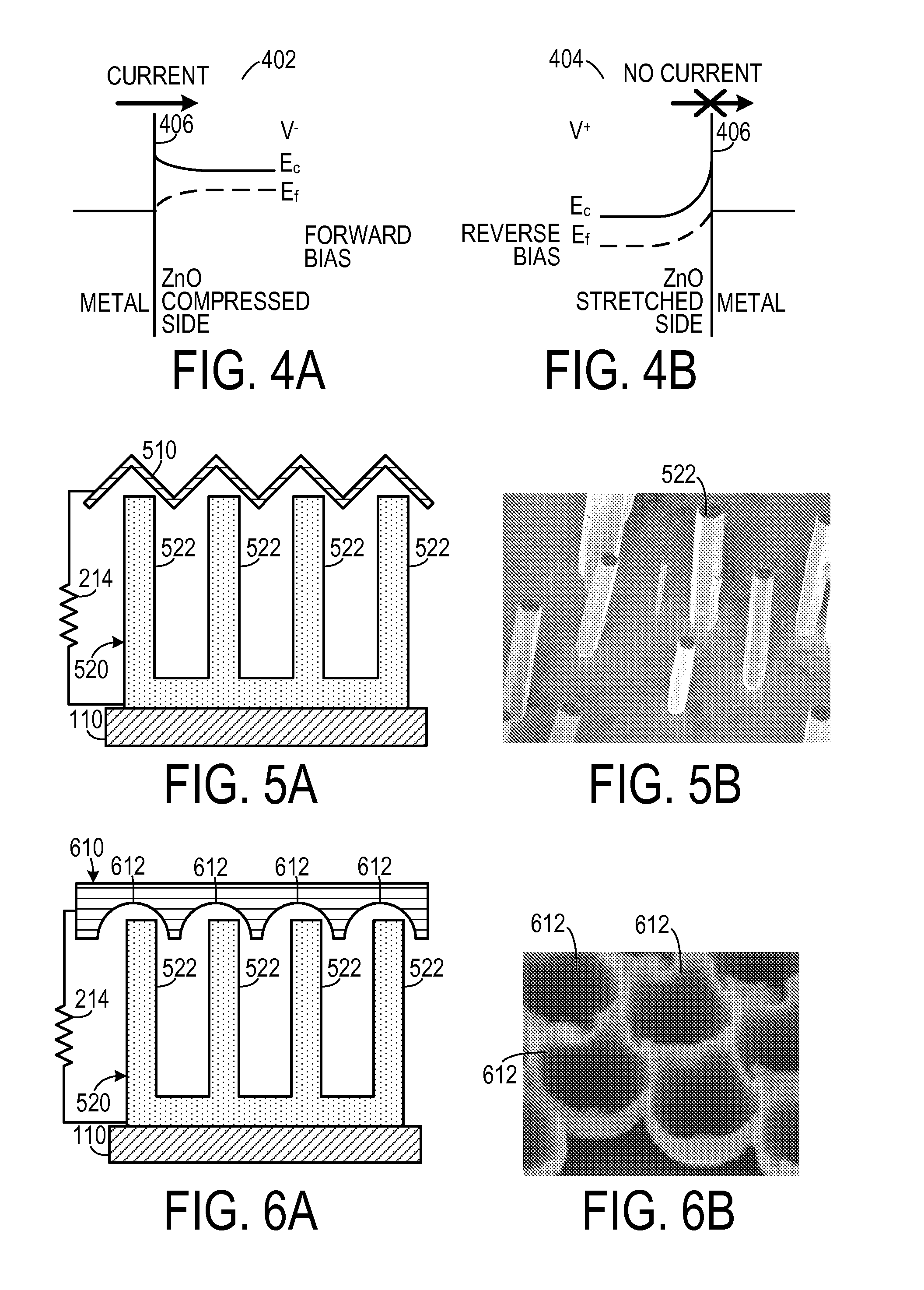Self-activated nanoscale piezoelectric motion sensor
a piezoelectric motion sensor and nano-scale technology, applied in nanoinformatics, generators/motors, instruments, etc., can solve the problems of difficult strain detection, critical operating system real-time strain detection, and critical lifetime, size, weight and toxicity of batteries
- Summary
- Abstract
- Description
- Claims
- Application Information
AI Technical Summary
Problems solved by technology
Method used
Image
Examples
second embodiment
[0063]a generator is shown in FIGS. 2A and 2B, in which a first conductive contact 210 is disposed at the first end 122 and a second conductive contact 212 is disposed at the second end 124. The second conductive contact 212 could be either placed against the semiconductor piezoelectric structure 120 or placed against the substrate 110 if the substrate 110 is made of a conductive material. A load 214 is coupled between the first conductive contact 210 and the second conductive contact 212 so that when a force is applied to the first end 122 in direction F, a current I flows through the load 214.
third embodiment
[0064]A third embodiment is shown in FIGS. 3A-3D. In this embodiment, the first conductive contact 310 has an uneven surface. As a downward force is applied to the first conductive contact 310, as shown in FIG. 3B, part of the semiconductor piezoelectric structure 120 makes contact with the first conductive contact 310. This causes the semiconductor piezoelectric structure 120 to bend and a potential difference forms between the two sides of the semiconductor piezoelectric structure 120. Initially, as shown in FIG. 3C, only the positive side of the semiconductor piezoelectric structure 120 is in contact with the first conductive contact 310, which creates a reverse-biased Schottky barrier through which no current flows. However, once the first conductive contact 310 has been pushed down far enough, the negative side of the semiconductor piezoelectric structure 120 makes contact with the first conductive contact 310, thereby forming a forward-biased Schottky barrier and allowing curr...
PUM
| Property | Measurement | Unit |
|---|---|---|
| diameters | aaaaa | aaaaa |
| height | aaaaa | aaaaa |
| apex angle | aaaaa | aaaaa |
Abstract
Description
Claims
Application Information
 Login to View More
Login to View More - R&D
- Intellectual Property
- Life Sciences
- Materials
- Tech Scout
- Unparalleled Data Quality
- Higher Quality Content
- 60% Fewer Hallucinations
Browse by: Latest US Patents, China's latest patents, Technical Efficacy Thesaurus, Application Domain, Technology Topic, Popular Technical Reports.
© 2025 PatSnap. All rights reserved.Legal|Privacy policy|Modern Slavery Act Transparency Statement|Sitemap|About US| Contact US: help@patsnap.com



